These large predatory catfish from Southeast Asia usually grow to around half a meter in length. The maximum length given for H. wyckioides is up to 130 cm and 86 kg in weight, while “only” around 90 cm is given for H. wyckii. They are important food fish and are highly prized for their excellent meat, which is also very healthy. For this reason, they were introduced into aquaculture relatively early on in order to be independent of the irregular wild catch. The juveniles that are occasionally imported for specialized aquarists, zoos and show aquariums come from such aquacultures.
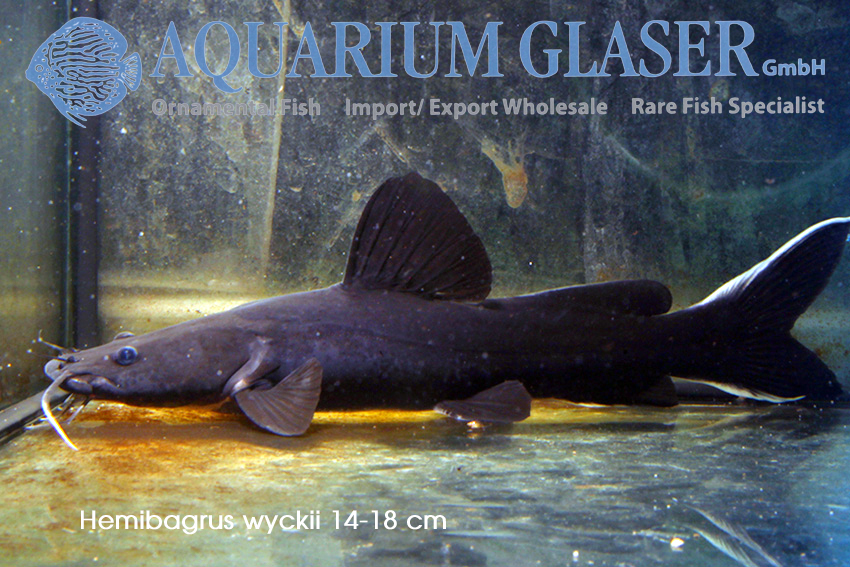
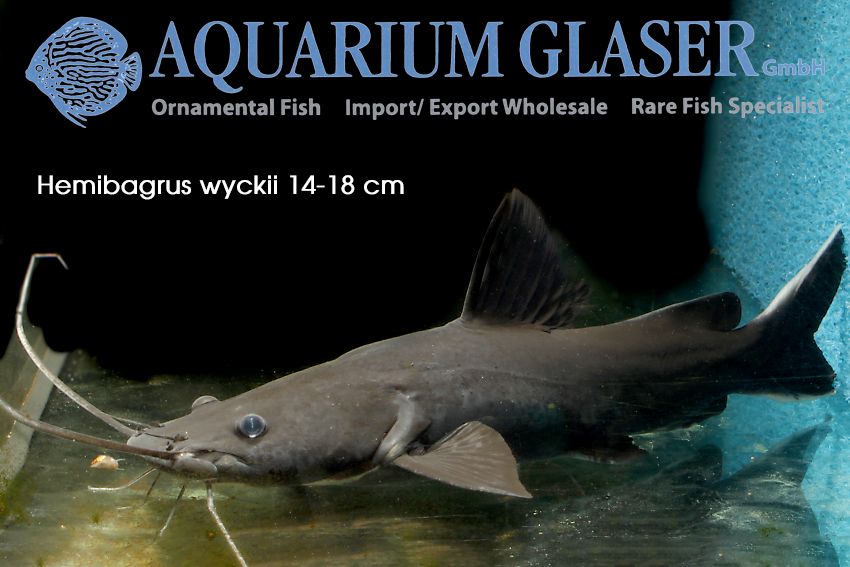
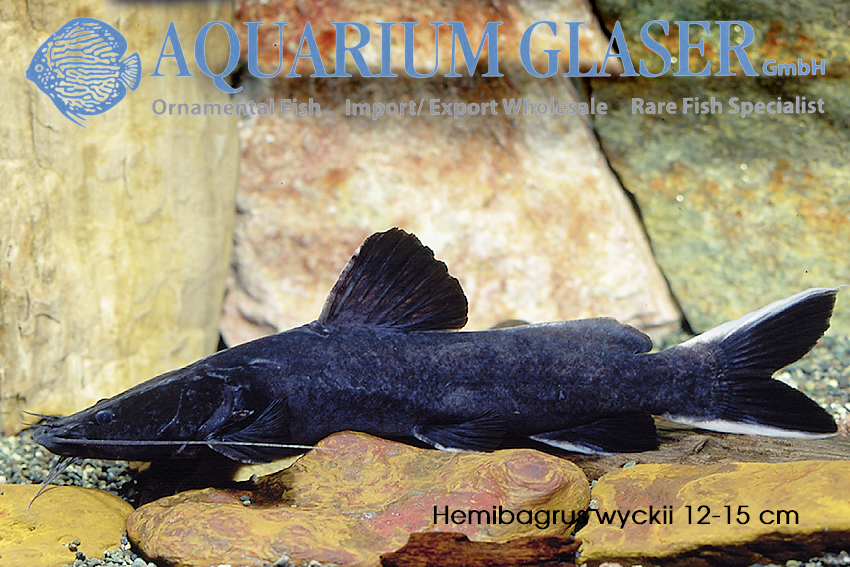
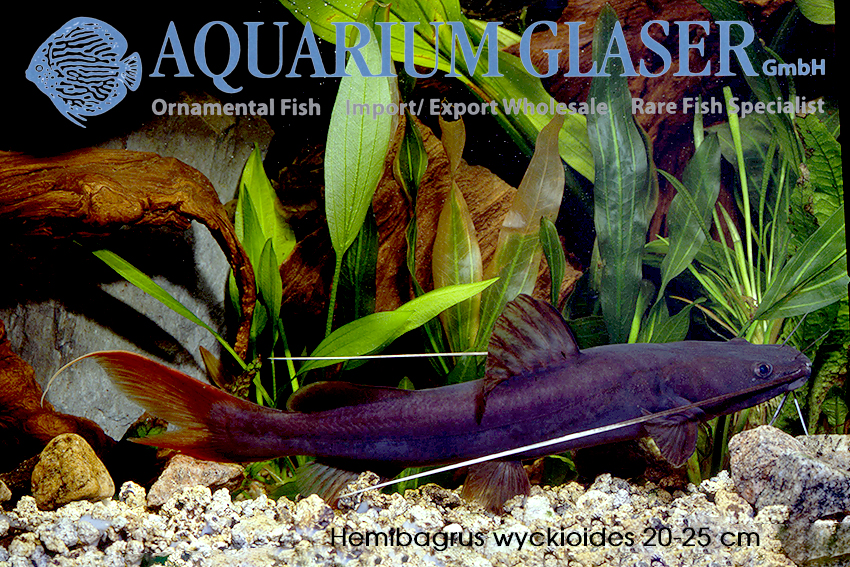
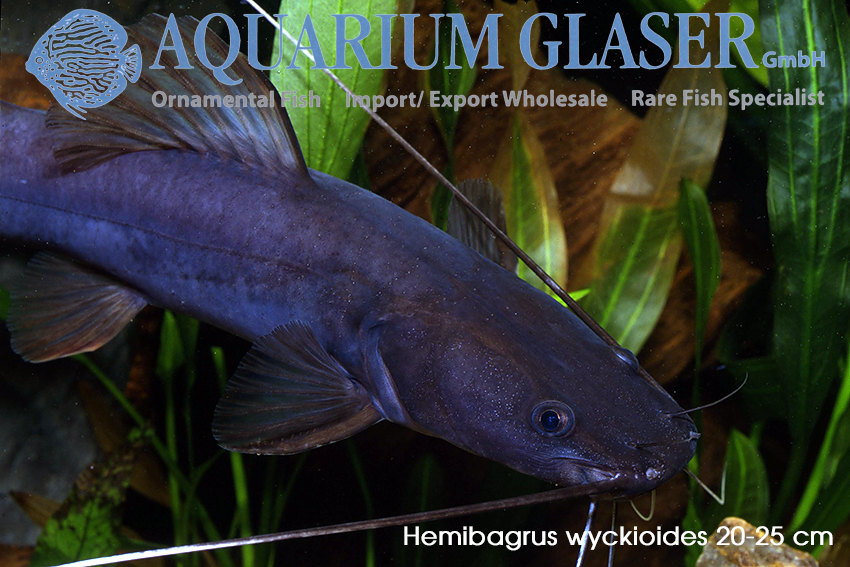
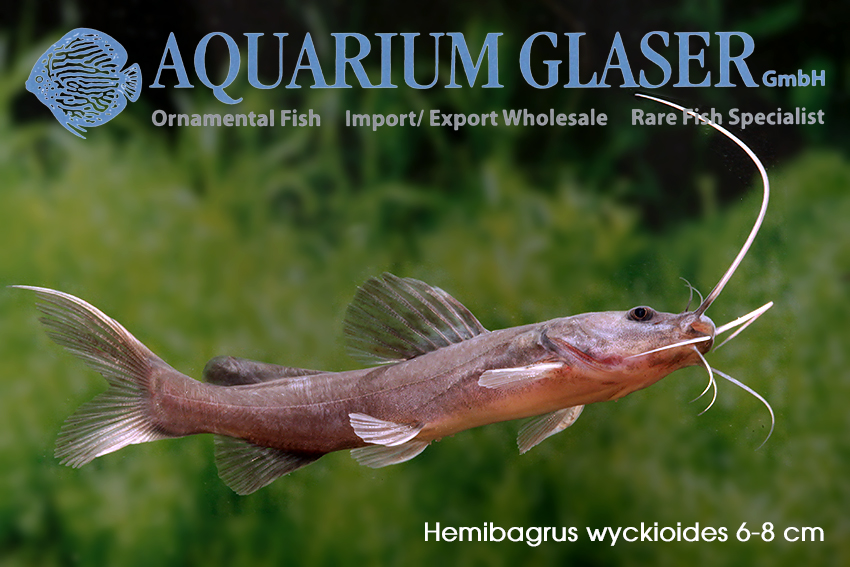
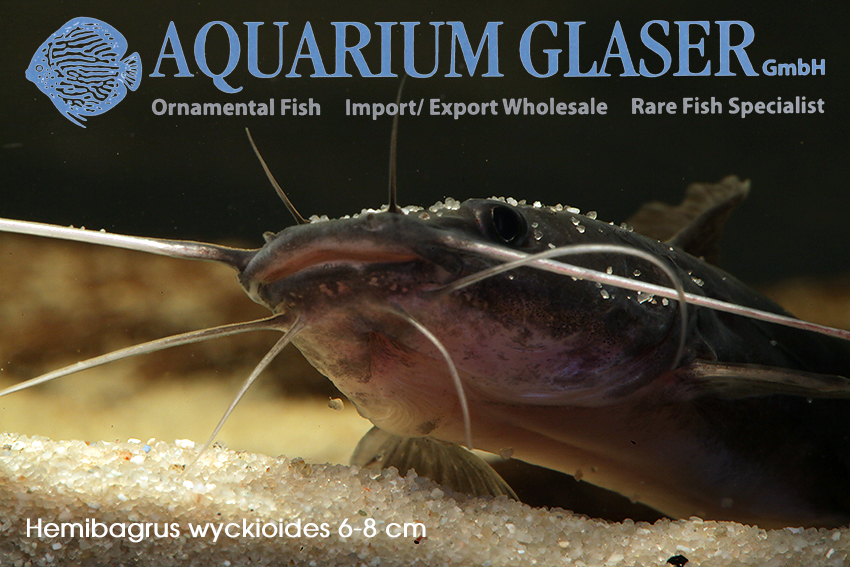
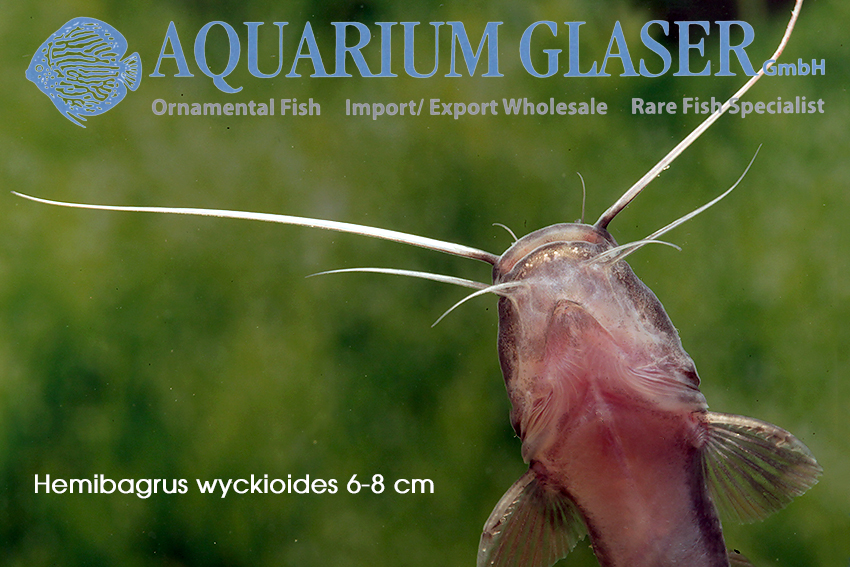
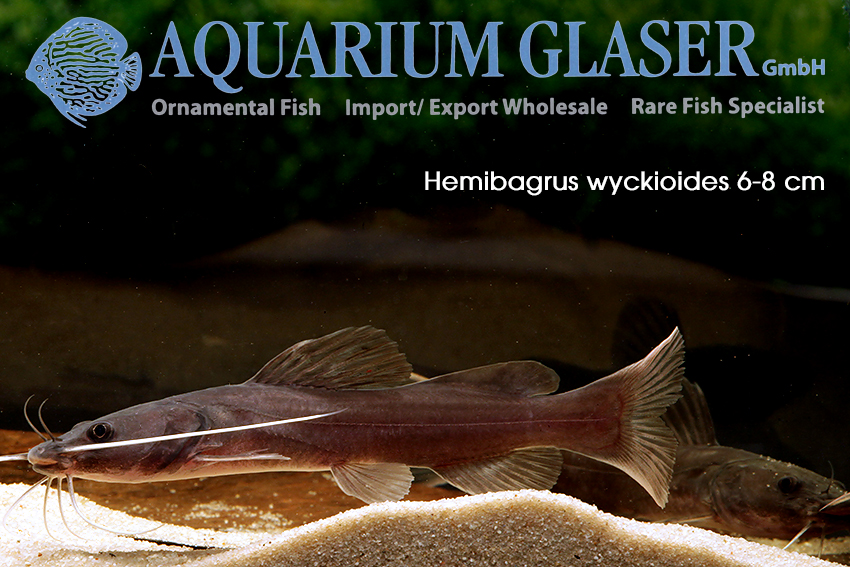
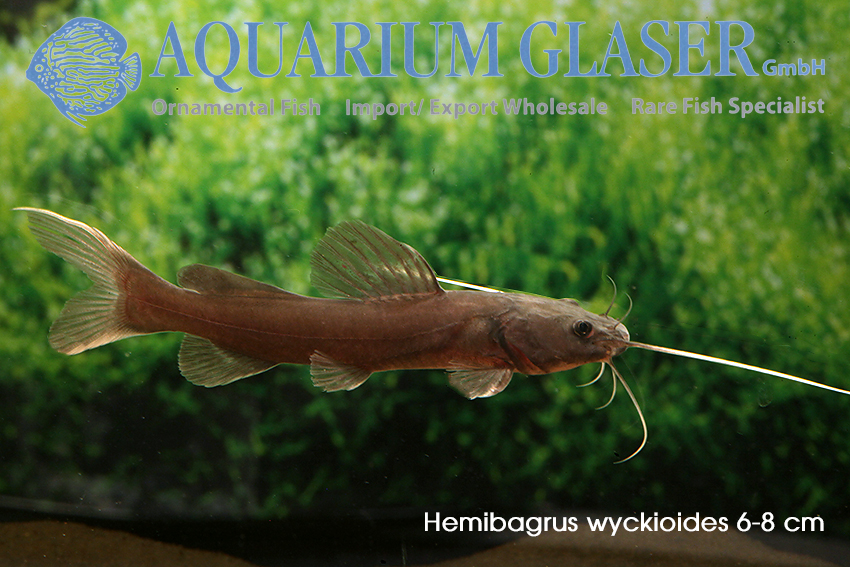
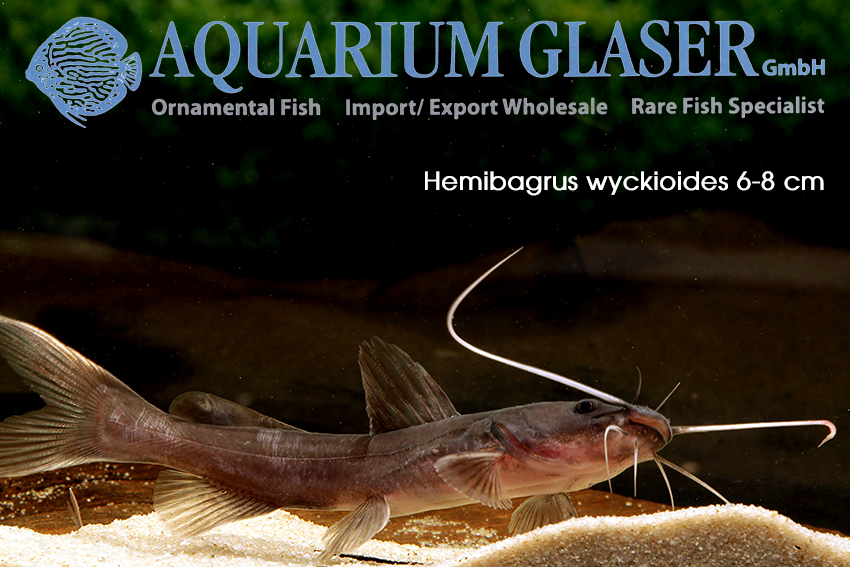
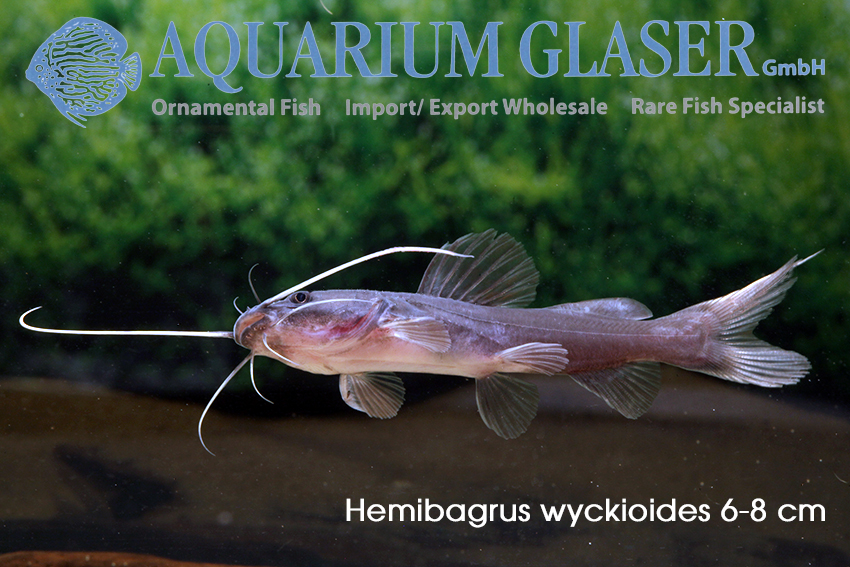
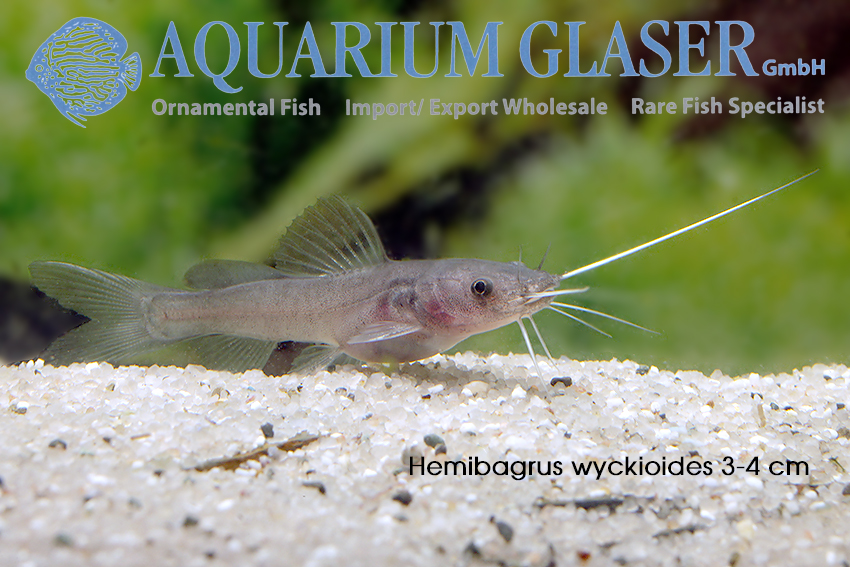
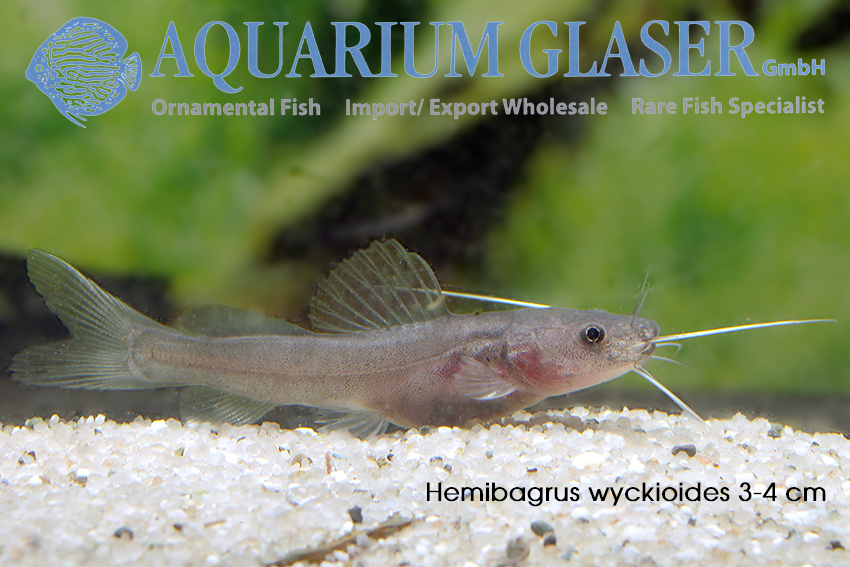
Externally, especially juveniles of H. wyckii and H. wyckioides are very similar. This is already indicated by the species name wyckioides ( = similar to wyckii). Juveniles of both species are dark gray on the body and fins, the barbels are white and the caudal fin is edged in white above and below. Adults become jet black and look different at the species level, as the white-edged caudal fin is then black in H. wyckii and red in H. wyckioides. However, there are two features that can be recognized on closer inspection even in commercially available juveniles of a few centimetres in length: the longest maxillary barbel – positioned towards the rear – extends at most to half of the dorsal fin in H. wyckii, whereas in H. wyckioides it is significantly longer and extends to half of the adipose fin. And the spine of the dorsal fin (this is the first ray of this fin) is very strong in H. wyckii, in H. wyckioides only as wide as the following soft ray.
In terms of care, it doesn’t matter which of the two species you get; both grow large, are very voracious and are splendid candidates for large Asian tanks; however, some individuals can prove to be territorial and aggressive towards other inhabitants. The chemical composition of the water does not matter to them; any water suitable for drinking is suitable for keeping them. The water temperature should be between 22 and 28°C, values above and below this should only occur rarely and for short periods. Little is known about the natural reproduction of Hemibagrus species. In aquaculture, the fish are stripped and the spawn artificially fertilized. It is assumed that both H. wyckii and H. wyckioides in the wild migrate to flooded areas during the rainy season and spawn there. There have been no reports to date of any kind of brood care.
For our customers: H. wyckii has code 437504, H. wyckioides code 421352 on our stocklist. Please note that we only supply the wholesale trade.
Text & photos: Frank Schäfer




